-
Author
Richard Orjis -
Date
28 Jul 2022
Essay
Curator's essay: twisting, turning, winding: takatāpui + queer objects
twisting, turning, winding assembles a temporary archive of takatāpui and queer objects.¹ LGBTTQIA+ creative practitioners from the fields of design, craft, art and architecture were invited to select something in their possession that embodied takatāpui or queer resonances. The objects range from things people have made, found or were gifted, and reveal the complexity of takatāpui and queer experience. The broad span of contributions enables a diversity of objects, perspectives and commentary and encompass sculpture, ceramics, jewellery, digital media, plants and minerals. These chosen forms illuminate diverse sensibilities, memories, associations, emancipatory conversations and the intimacies formed with ourselves and others.
The exhibition’s use of the terms ‘takatāpui’ and ‘queer’ positions bodies and pleasure as entities that are understood differently across socio-cultural and historic divides. Ngahuia Te Awekotuku and Lee Smith simultaneously rediscovered and redefined the term takatāpui in the late 1970s. This ancient word means ‘intimate companion of the same sex’. It has since been increasingly adopted by Māori with diverse gender identities, sexualities and sex characteristics. Elizabeth Kerekere affirms that “Takatāpui identity is related to whakapapa, mana and inclusion. It emphasises Māori cultural and spiritual identity as equal to — or more important than — gender identity, sexuality or having diverse sex characteristics."² Additionally, Kerekere asserts that Māori have historically shared more open views of sex and gender compared to their European counterparts, evidenced across multiple art forms from whakataukī to whakairo (proverbs to carving).
Alternatively, the word queer was historically a placeholder for something strange, broken, sick, or used as a trans-/homophobic slur. The term was reappropriated in the 1980s and 90s by artists, activists and scholars who sought to reclaim it as a politically radical understanding of same-sex love, desire and sex, and gender diversity. ‘Queer theory’ emerged at the same time. Similarly to the newfound meaning of queer, the theory seeks to destabilise institutionally sanctioned hierarchies and any claim that asserts something as normal, fixed or universal. One of the pioneers of queer theory, Eve Sedgwick, resisted creating a definitive definition of queer, seeing its refusal to settle down and its unremitting critiques of the status quo as ultimately productive. “One of the things that ‘queer’ can refer to”, she says, “[is] the open mesh of possibilities, gaps, overlaps, dissonances and resonances, lapses and excesses of meaning when the constituent elements of anyone’s gender, of anyone’s sexuality, aren’t made (or can’t be made) to signify monolithically.”³ For Sedgwick, queer is a concept in motion, aligning with the Indo-European root of the word itself. It is derived from ‘twerkw’, or across, which also yields the German ‘quer’ which means transverse, the Latin ‘torquere’, to twist, and the English ‘athwart’. Queerness is in flux, relational and always becoming.
At the heart of Sedgwick’s scholarship is the powerfully simple axiom, “People are different from each other”.⁴ twisting, turning, winding reveals the diverse and complex intersections of takatāpui and queerness to race, ethnicity, class, age, ability, trans-/homophobia, colonisation, diaspora and globalisation. In addition, objects in the exhibition highlight the importance of whānau and kinship arrangements — both biological and those created with friends and lovers, ancestors and the environment. Themes also emerge around queer failure, safe spaces and worldmaking, activism and assimilation.
The exhibition is a response to the recent flourishing of overt queer creative practice in Aotearoa and the publication of Chris Brickell and Judith Collard’s Queer Objects.⁵ The recent proliferation of takatāpui and queer-themed content is a reminder of the importance representation holds for LGBTTQIA+ communities who have emerged from a cultural landscape of institutional censorship or neglect. Like the work of Brickell and Collard, this exhibition reveals the rich connective threads between material culture and the diversity of queer experience. However, the exhibition deviates from the publication as it seeks the perspectives of local makers, a group invested in objects’ creation and their meaning within the context of Aotearoa.
A talisman of sorts for the exhibition sits on the other side of the globe. On display at the British Museum is an intricately carved 18th-century papa hou. This wooden treasure box depicts same-sex couplings, figures intertwined in sexual union; it opens up a long lineage of queer objects in Aotearoa. The papa hou was made in the Bay of Islands by an unknown carver and passed through the hands of two European women before making its way to the museum. All sides are equally embellished: figures twist around, above and beneath the three-dimensional form. The object presents an appropriately queer reorientation, as the lid is as exquisitely carved as the base. This papa hou was designed to be admired from below as it took pride of place, out of harm’s way, in the rafters of the whare. Such boxes were used to hold prized items, such as feathers or hei tiki. A contemporary treasure box, by contrast, stored on top of a dresser, may hold cufflinks, twisted necklaces that have migrated into the corners, some international currency that will never be spent, an engagement ring given by an ex, or teenage mementoes — a jute friendship bracelet and a hand-dated bubblegum wrapper from a crush. What remains constant over time is that treasure boxes hold an array of possessions relating to body, adornment, ritual and whakapapa. As such, the treasure box is a helpful metaphor for this exhibition, a protective container to safeguard objects that operate across a continuum of universal and sentimental value and meaning.
Queer exhibition-making provides contingency to push back on established taxonomies and reside with fluid boundaries, uncertainty and even unknowability. The papa hou is housed in Room 1 of the British Museum, a space dedicated to the Enlightenment. The 18th century was an era of new knowledge, scientific discovery and wealth generated from Britain’s colonial empire and the transatlantic slave trade. Linda Tuhiwai Smith has stated that the European modernist ontologies that took hold during the Enlightenment, just before the colonisation of Aotearoa, were deeply embedded in systems of classification and representation which lent themselves to binary opposition, dualism and the hierarchical ordering of the world.⁶ These maintained racial, sex, gender and species dominance that required the Other, the lesser, to make sense of what was normal or correct. This has had direct consequences for queer communities, which were deemed to exist outside the norm and have been relegated to endure incarceration, hospitalisation and ostracisation.
twisting, turning, winding is built from a foundation that takatāpui and queer lives and ways of knowing exist, are important and are worth examining. The exhibition simultaneously acknowledges the cultural resonances of takatāpui and queer experiences and unsettles any notion of universalising sensibilities. This temporary archive of takatāpui and queer objects dispenses with clear boundaries between creative disciplines and reveals that the objects we live with are imbued with significance that relates to time, place and sociability. And amid discord and the possible irresolvable tension of individual and collective identity, the contributors share a willingness to examine, disrupt and search out alternative ways of representation.
—
¹ In this context ‘queer’ refers to the diversities of sex characteristics, sexual orientations and gender identities including lesbian, gay, bisexual, takatāpui, transgender, queer, questioning, intersex, asexual, whakawāhine, tangata ira tāne, fa‘afafine, fakaleiti, akava‘ine, māhū, vaka sa lewa lewa, rae rae, fiafifine, fakafifine, palopa, kathoey, hijra, baklâ, genderfluid, genderqueer and pansexual.
² Elizabeth Kerkere, Takatāpui: Part of the Whānau (Auckland: Tīwhanawhana Trust and Mental Health Foundation, 2015 ), 1.
³ Eve Kosofsky Sedgwick, Tendencies (Durham: Duke University Press, 1993), 8.
⁴ Eve Kosofsky Sedgwick, Epistemology of the Closet (Los Angeles: University of California, 2008), 22.
⁵ Chris Brickell and Judith Collard (eds), Queer Objects (Dunedin: Otago University Press, 2019).
⁶ Linda Tuhiwai Smith, Decolonizing Methodologies: Research and Indigenous Peoples, second edition (London: Zed Books, 2012), 113.
—
This essay was written by Richard Orjis during the development of the exhibiton twisting, turning, winding: takatāpui + queer objects, which was curated by Orjis with exhibition design by Michael McCabe and takatāpui and community advisory by Kaan Hiini.
—
Richard Orjis is an interdisciplinary artist, curator, and educator based in Tāmaki Makaurau, Auckland. His research investigates queer ecologies through site-orientated, archival and collaborative artworks and exhibition-making.
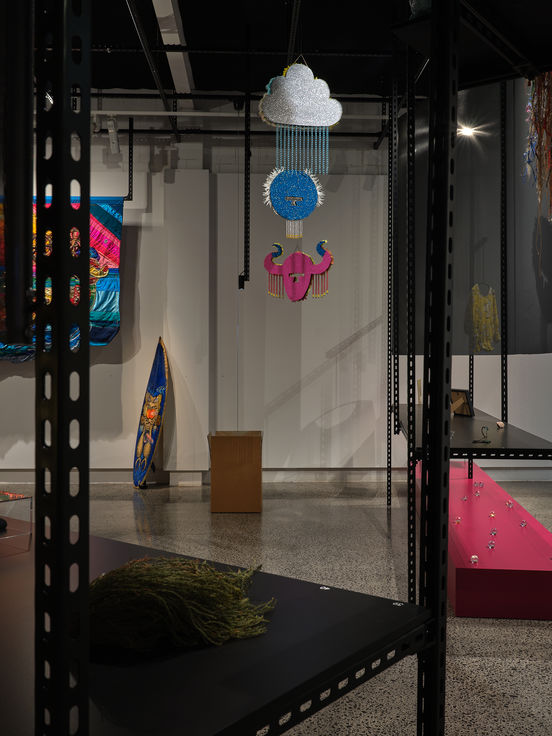

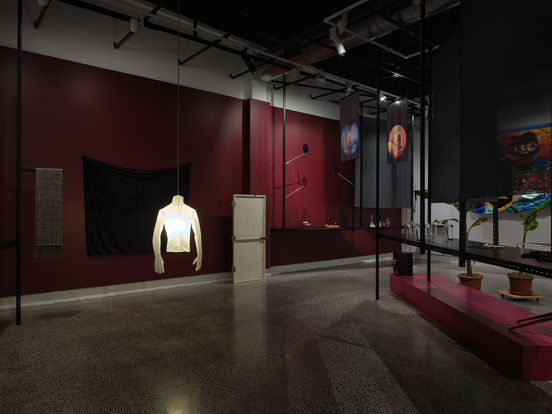
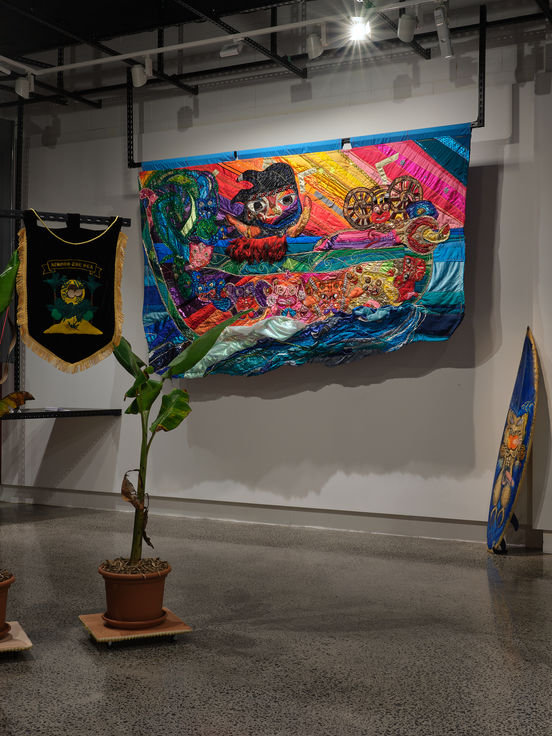
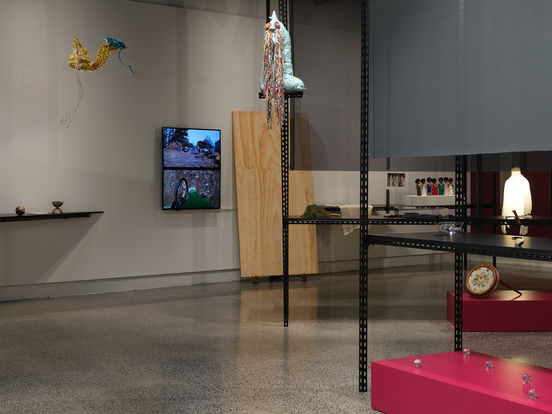
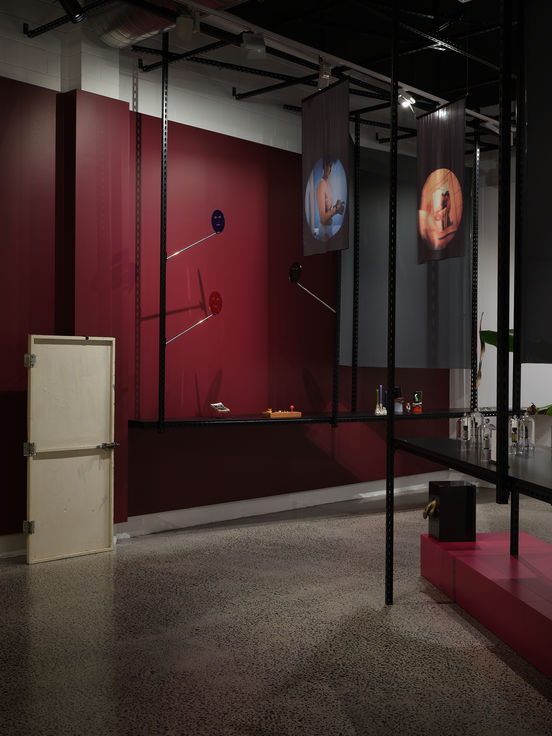
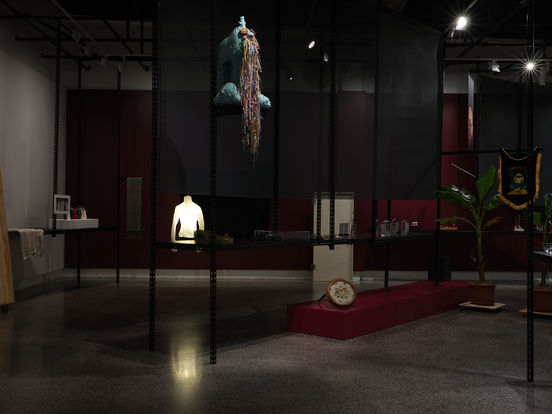
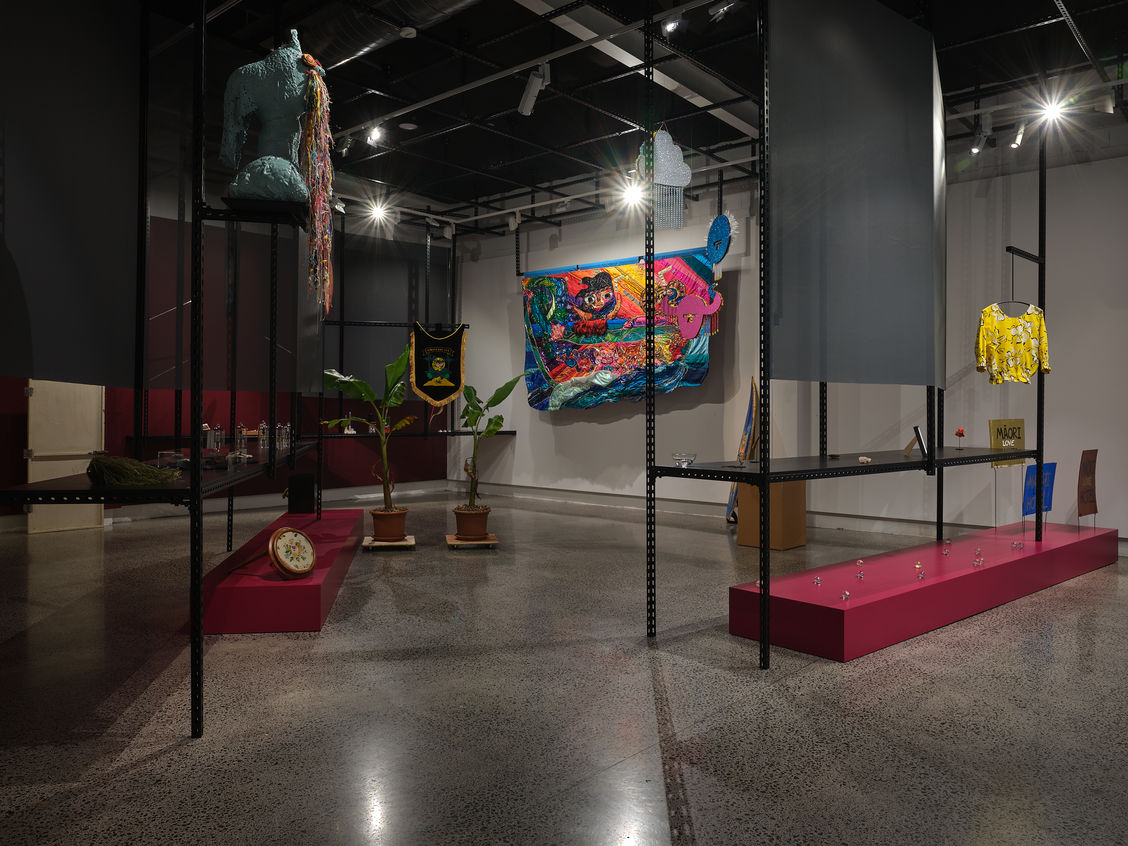
Installation views of twisting, turning, winding: takatāpui + queer objects 4 June – 21 August 2022. Photographs by Samuel Hartnett.